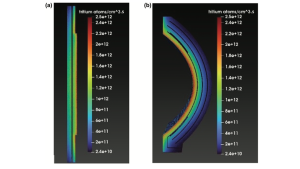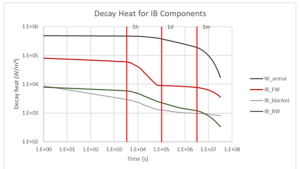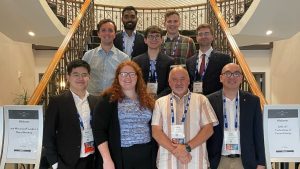Article from:
A team of professors at the University of Tennessee has embarked on research and training for the next generation of fusion nuclear engineering graduates.
Nuclear power generation has been dominated by fission-based systems for several decades. There are hundreds of operational nuclear reactors around the world that have recorded operational data that can be useful to help the modelling and simulation of the many new advanced reactor designs. In contrast, fusion energy holds tremendous potential for carbon-free power generation, but the few existing fusion reactors are largely experimental facilities not designed for power generation. Thus, designers of fusion-based power generating systems currently must rely on sophisticated computer simulations, which have limitations related to the lack of operational and experimental data.
Research Focus: Neutronics and Multi-Physics Simulations
Professor G Ivan Maldonado has spent over three decades in modelling and simulation of fission reactors throughout his career in the US industry and academia. In 2020, with support from the Oak Ridge National Laboratory, he and his colleague, Professor Nick Brown, began extending their expertise in fission reactor physics toward fusion neutronics and other related multi-physics simulations.
This work was extended in 2021 by a U.S. Department of Energy (DOE) three-year grant funded by the Office of Fusion Energy Sciences (FES), led by Professor Brown. This work was intended to support the design and licensing of a fusion engineering demonstration facility. They contributed analyses and analysis tools for the fusion community focused on neutronics, e.g., for tritium breeding ratio (TBR) and other assessments, including thermal-hydraulic/mechanical simulations.

The capabilities developed are intended to support the design and licensing of a future fusion engineering demonstration facility and a future engineering demonstration plant. One of the major needs was related to blanket and fuel cycle integrated design simulations for neutronics and thermal-hydraulics of the fusion system’s blanket so as to provide projections under normal operation and during operational transients.
This work was funded by the DOE Award No. DE-SC0022308 and has led to several peer-reviewed journal publications.1-10 The figure below illustrates tritium buildup in the inner (a) and outer (b) lead-lithium blanket of a representative fusion reactor, while (c) shows trends in decay heat density for the inboard components.
Educational initiatives: Building a diverse workforce in fusion energy
In 2023, Maldonado and Brown won a three-year subcontract in conjunction with University of New Mexico (UNM) titled: “Heavy Liquid Metal-Materials Interactions: An Integrated Education and Research Project,” led by Professor Osman Anderoglu at UNM, under the Fusion Energy Science – Reaching a New Energy Sciences Workforce (FES-RENEW) programme from the DOE that provides training opportunities for students and researchers from institutions that are underrepresented in the DOE’s Office of Science research portfolio. The programme’s goal is to build a foundation for future research by developing a pool of talented young scientists, engineers, and technicians. Many of the related activities are synergistic with previous and ongoing work at UTK.

The main objective of this project is to establish an inclusive, experiential-based educational programme for the next generation of researchers and engineers in key areas of heavy-liquid metal (HLM) coolant-materials interactions. This will include experimental and computational opportunities for diverse students by utilising the unique capabilities and expertise of the participating university partners. This work is currently funded by the US DOE Award No. DE-SC0024668.
Integrating experimental data into simulations
Most recently, in 2024, Maldonado and Brown added UTK NE Assistant Professor Livia Casali to their team and secured an additional grant from the DOE’s Office of Science FES that will enable them to pursue validations of their simulations against real fusion experimental data. The aim is to help validate simulations using experiments from three fusion facilities: the DIII-D tokamak in San Diego, California; the Frascati Neutron Generator in Italy; and the MAST-U facility in the UK, among others. Along with access to those facilities, Professor Casali’s experience and connections with the DIII-D and MAST-U experimental fusion reactors will help take the fusion neutronics simulations to the next higher level of trustworthiness. This work is currently funded by US DOE Award No. DE-SC0025500.
In the process, the UTK NE team will also be helping promote and validate an emerging, open-source neutronics simulation package co-developed by the Massachusetts Institute of Technology (MIT) and Argonne National Laboratory (ANL). The software, called OpenMC, has already cut the time it takes to generate a simulation from months to weeks and provides several modern features, such as a Python interface for easy data access and graphical manipulations. The UTK team is very appreciative of the support our students have received from Dr Paul Romano (ANL) and Professor Ethan Peterson (MIT), among several other colleagues in the community.

Shaping the future of nuclear power generation
Maldonado, Brown, and Casali have emphasised developing a workforce pipeline as part of their latest grant, which includes funding for each professor to work with one PhD and one undergraduate student.
So, the plan is for some of these undergraduates to continue as graduate students and ultimately help mentor future graduate students. The efforts in these fusion-neutronics and multi-physics-related activities have already led to two PhD and six MS degrees, one of which is currently a postdoc at MIT supporting the OpenMC team and MIT’s efforts toward a new fusion power plant.
The support provided by the US DOE taps into a well-oiled machine of nuclear research, nuclear engineering education, and commercial/government nuclear entities at and near the University of Tennessee. A fusion engineering workforce pipeline has not yet been fulfilled; however, Knoxville and Oak Ridge, Tennessee, are the perfect places to start it.
References
- M. Rizk, N. R. Brown, and G. I. Maldonado, “Neutronics Analysis of Shielding Material Alternative to Tungsten Carbide in the FESS-FNSF Facility,” in IEEE Transactions on Plasma Science, doi: 10.1109/TPS.2024.3477551.
- S. N. Quang, N. R. Brown and G. I. Maldonado (2024), “Testing the Activation Analysis for Fusion in OpenMC,” in IEEE Transactions on Plasma Science, doi: 10.1109/TPS.2024.3426323.
- J.L. Barthle, N. Meehan, G.I. Maldonado, N.R. Brown (2024). A RELAP5-3D Model of the Lobo Lead Loop. Nuclear Technology, 1–12. https://doi.org/10.1080/00295450.2024.2374661.
- S.N. Quang, J.F. Wing, N.R. Brown, G.I. Maldonado (2023), “Activation Analysis for the Inboard Region of FNSF Using SERPENT,” Fusion Science and Technology,” DOI: 10.1080/15361055.2023.2185043
- F.S. Novais, N.R. Brown, G.I. Maldonado (2023), “Tritium Breeding Ratio Evaluation of Solid Breeder Concepts for the FESS-FNSF,” Fusion Science and Technology, DOI: 10.1080/15361055.2022.2161263
- M. Rizk, F.S. Novais, N.R. Brown, G.I. Maldonado (2023) Radiation Damage Analysis of FNSF Components Using McCad and MCNP, Fusion Science and Technology, DOI: 10.1080/15361055.2022.2140580
- N. Meehan, G.I. Maldonado, N.R. Brown, “Demonstration of RELAP5-3D for transient analysis of a dual coolant lead lithium fusion blanket concept,” Fusion Engineering and Design, Volume 180, 2022, 113192, ISSN 0920-3796, https://doi.org/10.1016/j.fusengdes.2022.113192.
- M.S. Tillack, S.A. Bringuier, I. Holmes, L. Holland, F. Santos-Novais, G.I. Maldonado, “GAMBL – A dual-cooled fusion blanket using SiC-based structures,” Fusion Engineering and Design, Volume 180, 2022,113155, ISSN 0920-3796, https://doi.org/10.1016/j.fusengdes.2022.113155.
- M. O’Neal, S.B. Seo, G.I. Maldonado, N.R. Brown, “Assessment of BISON capabilities for component-level prediction of tritium transport in fusion and fission applications,” Fusion Engineering and Design, Volume 175, 2022, 112996, ISSN 0920-3796, https://doi.org/10.1016/j.fusengdes.2021.112996.
- S.B. Seo, R. Hernandez, M. O’Neal, N. Meehan, F. S. Novais, M. Rizk, G. I. Maldonado, N. Brown, “A Review of Thermal Hydraulics Systems Analysis for Breeding Blanket Design and Future Needs for Fusion Engineering Demonstration Facility Design and Licensing,” Fusion Engineering and Design, 172, doi:10.1016/j.fusengdes.2021.112769, Nov. 2021.
Please note, this article will also appear in the 20th edition of our quarterly publication.